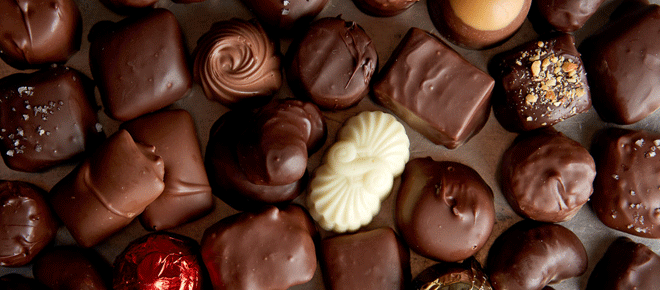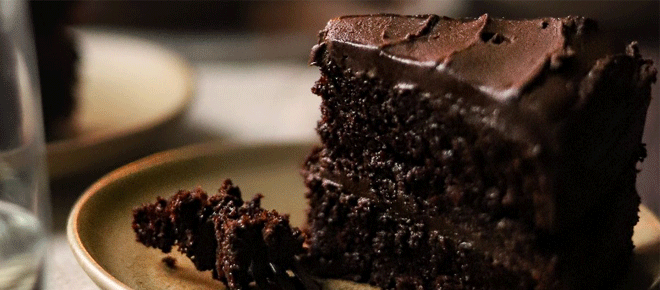Chocolate Candy - The Perfect Match for Your Taste Buds

When it comes to chocolate candy, you have a lot of choices. There are Hershey's, Kit Kats, Reese's, Mounds, and many other well-known brands.
The best chocolate is made with high-quality ingredients. You can tell by examining it for a nice sheen and sniffing it for scents that may be flowery, woody, or even fruity.
Dark Chocolate
Dark chocolate is a favorite among those who like a robust and intense flavor. Its bitterness is a nice contrast to sweet fruits, and it can even work with savory foods. Try pairing it with sharp cheeses like goat or bleu for a unique culinary experience.
One of the reasons that dark chocolate is often paired with nuts and other nut-based treats is its ability to absorb and amplify their flavors. The cocoa solids in this type of chocolate are rich in antioxidants, which also help protect the heart and mind. This is why it can help lower blood pressure, reduce the risk of stroke, and prevent diabetes.
When shopping for dark chocolate, it’s important to find high-quality ingredients. Look for organic, fair trade, and bean-to-bar options that contain a high percentage of cocoa solids to ensure maximum flavor. It’s also important to read the ingredient list and avoid bars that have added vegetable oils, artificial flavors, or excessive sweeteners.
In addition to the cocoa content, another important factor in finding the perfect dark chocolate is texture and aroma. This is because our sense of smell plays a critical role in how something tastes, as it can enhance or detract from our overall experience.
Another thing to keep in mind is that chocolate can deteriorate with exposure to light. This is because the sun’s rays break down some of the polyphenols that are responsible for its flavor and health benefits. For this reason, you should store your chocolate in a cool, dark place to preserve its flavor and texture.
Creating the perfect dark chocolate treat is simple. Melt a block of your favorite dark chocolate in the microwave or on a double boiler until it is smooth. Then, add in a mixture of finely chopped nuts, dried fruit, or other fillings to craft a delicious truffle. To give these treats a special touch, consider rolling them in cocoa powder or sugar. For a gourmet touch, experiment with different techniques to add depth and complexity to your chocolate creations. For quality ingredients, explore options from Candy Club, and be sure to use Candy Club coupons for potential savings on your chosen elements for these delightful treats.
Milk Chocolate
For the sweet tooth, milk chocolate is a melt-in-your-mouth delight. Developed by Swiss chocolatiers in the late 19th century, milk chocolate is rich and creamy with a smooth texture. It is loved around the world for its delicate sweetness and unique flavor profile.
Unlike dark chocolate, which is typically made from cocoa beans with varying origins, milk chocolate is generally made with a single cocoa bean variety. This results in a flavor profile that is often more predictable. Nevertheless, it can still deliver complex and unique flavors that are distinctively milk chocolate.
Like dark chocolate, milk chocolate can be used in a wide variety of desserts and drinks. It pairs well with fruits such as bananas, figs, pears, and mangoes, and also works wonderfully with many berries, especially raspberries and strawberries.
Milk chocolate is also deliciously paired with nuts. The richness of the chocolate complements the nutty flavor of walnuts, peanuts, pecans, and hazelnuts. It can also be combined with creamy ingredients like ice cream or yogurt for a decadent treat.
One of the most classic uses for chocolate is in desserts, but it can be a creative addition to savory recipes as well. Chocolate adds a depth of flavor and richness that enhances grilled meats, roasted vegetables, and even tofu dishes.
To experience the full flavor of chocolate, place a piece in your mouth and allow it to melt for a few seconds before chewing. This allows the fatty acids to be released and triggers all four taste zones on your tongue. After chewing, roll the chocolate around your tongue to explore all of its nuances.
For a delicious and fun treat, try making milk chocolate bonbons. Melt milk chocolate in small candy molds and fill it with a variety of ingredients, including caramel or fruit puree. Then let the chocolate set and break into irregular pieces for a visually appealing and irresistible snack. To take your chocolate snacking to the next level, try sprinkling a combination of dried fruits or nuts over melted milk chocolate and then setting it in the fridge to harden for a tasty, crunchy topping.
White Chocolate
For many, white chocolate is the perfect solution for those who want a more subtle and creamy taste. It also tends to appeal to those who don't love the strong bitterness found in dark chocolate. It is made from cocoa butter, sugar, milk solids, vanilla, and a fatty food additive called lecithin. It is often combined with other types of chocolate in desserts such as triple-chocolate cookies.
White chocolate is also a popular choice for candy bars, such as those that have marshmallows or fruit fillings in them. It can also be used to add a special touch of luxury to baking or to create elegant sweets for special occasions like weddings.
One of the biggest benefits of white chocolate is that it can take on almost any flavor and make it pop. It is the perfect match for tartness, spiciness, and fruitiness, which is why you'll find it in truffles and other flavored treats. It is also a good match for more delicate flavors, such as champagne or apricot.
If you want to try a more unique take on white chocolate, you should seek out specialty chocolate from bean-to-bar makers. These chocolatiers focus on using high-quality ingredients to create truly exceptional chocolate products. They may even use organic or fair trade certification, which guarantees that they are following higher standards of production and helping support the community.
In addition, if you're looking for a more healthful option, look for white chocolate that is labeled as being low-calorie or lower in fat. Some companies use canola oil instead of cocoa butter, which makes it less calorie-dense. Those who are allergic to soy should be cautious about eating soy lecithin, which is sometimes used as an emulsifier in chocolate.
While there is much debate about the best type of chocolate, there is no denying that all varieties can provide some nutritional benefits. Chocolate offers a rich source of flavonoids and antioxidants, along with calcium and phosphorus. It also provides an excellent source of protein. Chocolate also contains soluble fiber, which can aid in digestion and help prevent constipation. For a delectable selection of chocolate varieties, explore options from Candy Club, and make sure to use a Food & Drinks Coupon Code for potential savings on your favorite treats that offer both flavor and nutrition.
Other Flavors
Chocolate, like other candy, is sweet and can be paired with many ingredients to create different flavors and textures. However, unlike other candies that use sugar as the primary sweetener, chocolate is made from cocoa beans and therefore naturally has a bitter taste. This difference between the two types of candies sets chocolate apart and allows chocolatiers to craft unique confections that pair chocolate with other natural flavor profiles.
This pairing can be as simple as dipping fruits in chocolate. Many people enjoy strawberries dipped in milk or dark chocolate, while others prefer a combination of green tea and red beans (azuki). Other options include pineapple chunks, mango slices, or peanut butter chips. The sweetness of the fruit or nuts is balanced by the bitterness of the chocolate, resulting in a balance of flavors that appeal to all five taste buds.
In addition to combining flavors, chocolate is often enhanced by the inclusion of other ingredients, such as sea salt or caramel. These additions can enhance the texture and flavor of a chocolate bar or allow it to be used in various food applications, including ice cream. Chocolate can also be molded into different shapes and used to garnish drinks, desserts, or even sandwiches.
The other flavor that pairs well with chocolate is mint. Whether it is in the form of water-soluble flavors added to chocolate cream centers or oil-soluble flavors used directly in chocolate bases, mint adds a refreshing depth to any chocolate recipe.
While it may not be as common to see a banana dipped in chocolate, it is still a great combination for those who love the taste of both. This is a good time to mention that there are several vegan options for those who are looking to avoid dairy products. These options can be found in the form of chocolate-covered almonds, dark chocolate truffles, and a wide variety of other dessert and snack items. It is important to keep in mind that these options may be lower in nutritional value as compared to other chocolate varieties.
Conclusion
Finding the perfect chocolate candy to satisfy your taste buds can be a sweet adventure. With so many flavors, textures, and brands to choose from, the options are endless. Whether you prefer dark, milk, or white chocolate, there is a candy out there that will leave you feeling satisfied. So, go ahead and indulge in a delicious chocolate treat - your taste buds will thank you!








